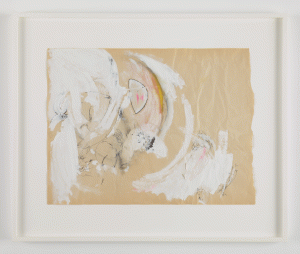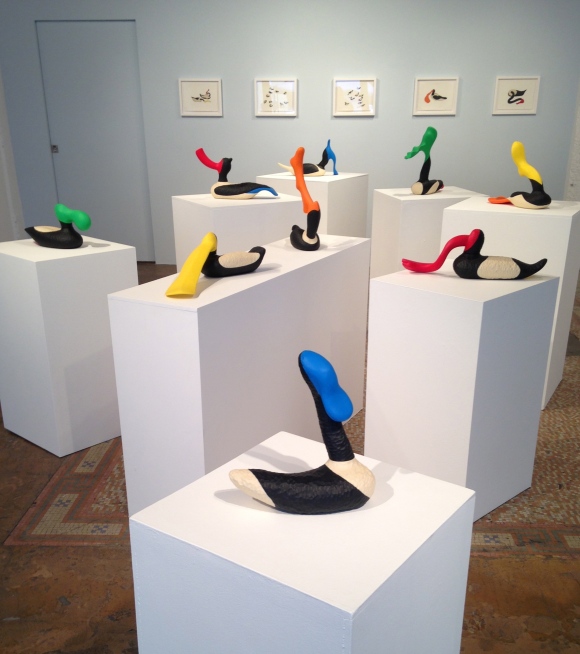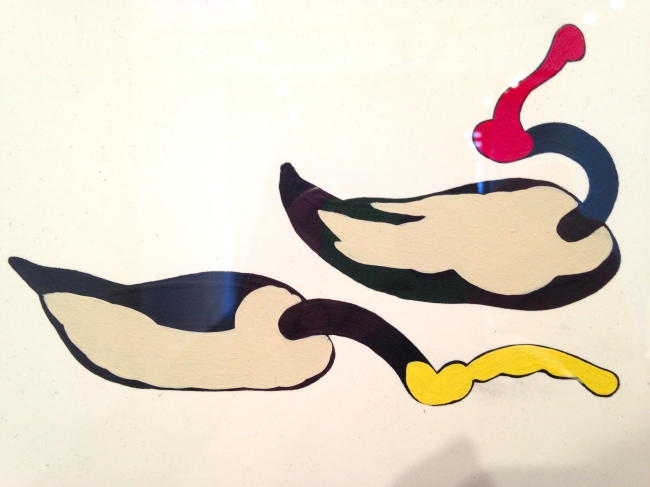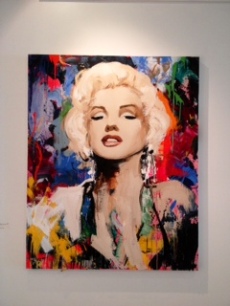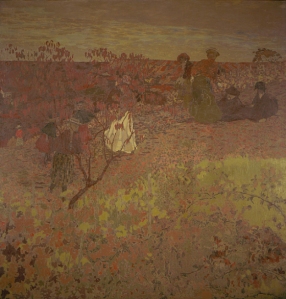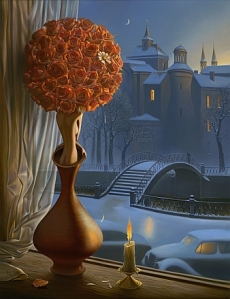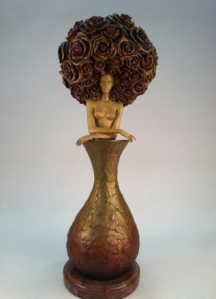The Cut was an exhibit of mixed media collaged piece of work by Antony Hegarty. He is both a fine artist as well as a musician. The work really explored materials and the juxtaposition of different materials. He used materials such as paint, fabric, plastic, tape, etc. The show was entitled The Cut in reference to a poem written by the artist.
Through juxtaposition of materials and the treatment of the materials (torn, burned, melted) Antony created a very visceral and gestural group of works. You could picture the physicality of the treatment of the materials. There was almost a violent tone in the way that he manipulated the materials. He utilized the surface of the materials in order to call attention to certain details. In the piece above, he has ripped up a black piece of paper and then taped it back together. The shine of the tape next to matte color of the paper call attention to this process and action of the tearing and the taping. In many of his pieces there was a repetition of tearing and taping. And, in the tape, he left pieces of hair that had gotten caught on the tape during the process. You really had to look closely to fully appreciate the mixture of delicate details and violent manipulation of the surface of his materials.
The Cut was very inspiring to me and my work because I am so interested in process, but also I work similarly to Antony in my Artist Book. It is a new way for me to work as a “distresser “of the image. I am normally very controlled in my process, not to say that I am not controlled in my Artist Book, but it is a different kind of control. When I am working on the spreads in my book, I am working in a kind of controlled chaos. This controlled chaos is also seen in Antony’s work. You can tell that each action was carefully thought out. The hand of the artist and process is very apparent in the scratching and distressing of the surface just as in my book. Both of leave a part of ourselves behind on the surface through gesture, but also I am printing my body on the page and he is leaving hair and fingerprints on his “page.”
Elizabeth Sanders

